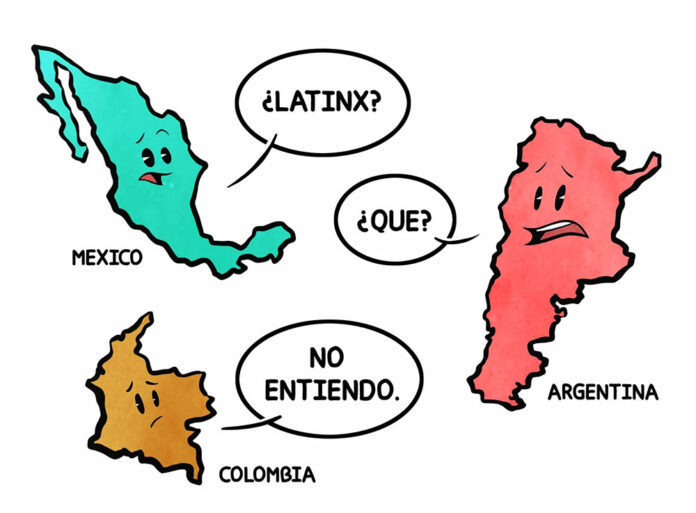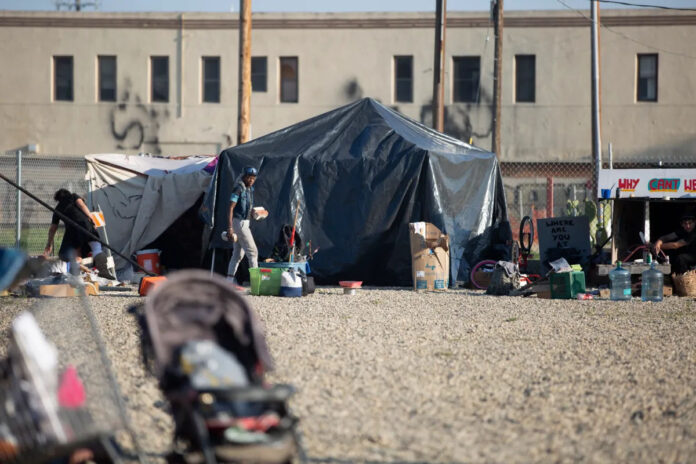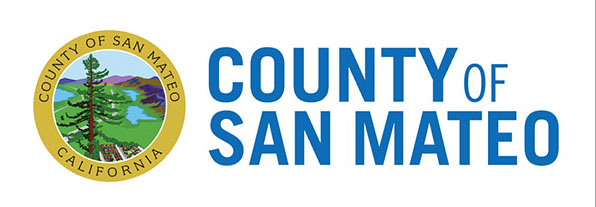NOTICE OF THE CHIEF ELECTION OFFICIAL OF THE TIME AND PLACE OF THE GENERAL ELECTION FOR PRESIDENTIAL, FEDERAL, STATE, COUNTY, MUNICIPAL, SCHOOL, SPECIAL AND ADVISORY OFFICES TO WHICH QUALIFIED CANDIDATES WILL BE ELECTED
NOTICE IS HEREBY GIVEN that a General Presidential Election will be held on Tuesday, November 5, 2024.
NOTICE IS HEREBY GIVEN TO ALL QUALIFIED PERSONS that an election will be held for the following offices in the County of San Mateo, State of California, for the purpose of electing members to the Federal, State, County, Municipal, School, Special and Advisory Offices listed below:
Federal and State Offices:
President/Vice President: 4-year term commencing January 20, 2024 2025
U.S. Senator (Full Term) – 6-year term beginning January 3, 2025
U.S. Senator (Partial/Unexpired Term) – This special vacancy election is for the remainder of the unexpired term in the United States Senate, which ends January 3, 2025
U.S. Representative in Congress, Districts 15 and 16 – 2-year terms each beginning January 3, 2025
State Senate, Districts 11 and 13 – 4-year terms each beginning December 2, 2024
State Assembly, Districts 19, 21, and 23 – 2-year terms each beginning December 2, 2024
County Offices:
Board of Supervisors: District 4 – 4-year term beginning January 6, 2024 2025
School Districts:
Bayshore Elementary School District: two 4-year terms; two 2-year terms
Belmont-Redwood Shores School District, Trust Areas 2 and 4: 4-year terms each
Brisbane School District: two 4-year terms
Burlingame School District, Trust Areas 2, 3, and 5: 4-year terms each
Cabrillo Unified School District, Trust Areas B and D: 4-year terms each
Hillsborough City School District: two 4-year terms
Jefferson Elementary School District: two 4-year terms
Jefferson Union High School District: two 4-year terms
La Honda-Pescadero Unified School District: three 4-year terms
Las Lomitas Elementary School District: two 4-year terms; 2-year term
Menlo Park City School District: two 4-year terms
Millbrae Elementary School District: two 4-year terms; 2-year term
Pacifica School District: two 4-year terms
Portola Valley Elementary School District: three 4-year terms
Ravenswood City School District: two 4-year terms
Redwood City School District, Trust Areas 1, 3, and 4: 4-year term each
San Bruno Park School District, Trust Areas 1 and 4: 4-year term each
San Carlos School District: two 4-year terms
San Mateo County Board of Education, Trust Areas 4, 5, 6, and 7: one 4-year term each
San Mateo County Community College District, Trust Areas 1, 3, and 5: one 4-year term each
San Mateo Union High School District, Trust Areas 1, 3, and 5: one 4-year term each Trust 2 and 4: one 4-year term each
San Mateo-Foster City School District, Trust Areas 3, 4, and 5: one 4-year term each
Sequoia Union High School District, Trust Areas B, C, and E: one 4-year term each
South San Francisco Unified School District, Trust Areas A and B: one 4-year term each
Woodside Elementary School District: two 4-year terms
Qualifications for Governing Board member positions pursuant to the Education Code are: any registered voter who is a resident of the school district, and for trust area races, a registered voter of the trust area, and not disqualified by the Constitution or state laws from holding civil office.
Special Districts:
Bayshore Sanitary District: three 4-year terms
Broadmoor Police Protection District: 4-year term
Coastside County Water District, Zones 1, 3, and 4: 4-year terms each
Coastside Fire Protection District, Districts A and B: 4-year terms each
Colma Fire Protection District: two 4-year terms
East Palo Alto Sanitary District: three 4-year terms
Granada Community Services District: two 4-year terms
Highlands Recreation District: two 4-year terms; 2-year term
Ladera Recreation District: two 4-year terms
Menlo Park Fire Protection District: two 4-year terms
Mid-Peninsula Water District, Divisions 1 and 2: 4-year term each
Midpeninsula Regional Open Space District, Division 7: 4-year term
Montara Sanitary and Water District, Divisions 2 and 4: 4-year term each
Montara Sanitary and Water District, At Large: 2-year term
North Coast County Water District, Zones C and D: 4-year term each
Peninsula Health Care District: two 4-year terms
San Mateo County Port District, Districts 1, 4, and 5: 4-year term each
Sequoia Health Care District, Zones B and D: 4-year term
West Bay Sanitary District: three 4-year terms
Westborough Water District, Zones 1, 3, and 5: 4-year terms each
Woodside Fire Protection District: two 4-year terms
Advisory Councils:
Central Coast Community Council: three 4-year terms
Pescadero City Advisory Council, District 1: six 4-year terms
Pescadero City Advisory Council, District 2, 3, and 4: two 4-year seats each
Pescadero City Advisory Council, At Large: 4-year term
Qualifications for the offices of Member, of the Board of Directors pursuant to the main charter of the district provide that the candidate be a registered voter of the district, and for races with divisions, zones, sections, and districts, that he be a registered voter of the division, zone, section, or district, who is … not disqualified by the Constitution or the laws of the state from holding civil office and all other specifications contained in the main charter of the district.
Declarations of candidacy and nomination papers for qualified candidates who wish to run for any of the elective offices may be obtained from the San Mateo County Registration and Elections Division, 40 Tower Road, San Mateo, CA 94402, 650.312.5222, beginning July 15, 2024, and must be filed by 5:00 p.m. on August 9, 2024. If any qualified officeholder fails to file nomination papers by the date and time stated, voters will have until 5:00 p.m. on August 14, 2024 to nominate candidates other than the officeholder of such office.
The supervisory authority shall make appointments to each elective office in accordance with §§5326 and 5328 of the Education Code and §§10515 of the Election Code in the event there are no candidates or an insufficient number of candidates for such office and a petition for election has not been filed within the time prescribed by law, which expires no later than 5:00 p.m. on August 14, 2024.
I FURTHER PROCLAIM that at such election there shall be submitted to a vote of the electors such proposed constitutional amendments, questions, propositions, and initiatives as the Constitution and laws of this State require them to be submitted.
NOTICE IS GIVEN that principal arguments for or against the initiatives may be submitted in written form to the San Mateo County Registration and Elections Division, 40 Tower Road, San Mateo, CA 94402, for printing and distribution to the voters, in accordance with the provisions of the California Elections Code, not later than 5:00 p.m. on August 13, 2024. Rebuttal arguments by the authors of such principal arguments may be submitted in like form not later than 5:00 p.m. on August 20, 2024.
The printed arguments submitted to the voters will be titled either “Argument in Favor of Measure ” or “Argument Against Measure ,” and “Rebuttal to Argument in Favor of Measure ___” or “Rebuttal to Argument Against Measure ___,” respectively.
All arguments on the above-named ballot measures must be accompanied by the following model statement, which must be signed by each proponent and each proponent, if different, of the argument:
The undersigned proponent(s) or proponent(s) of the ___________ (main/rebuttal) argument (for/against) the Ballot Measure for the _____________________________ (name of election) for the _____________________________ (name of jurisdiction) to be held on _________ (election date), hereby declare that said argument is true and correct to the best of his or her knowledge and belief.
Signed ________________
Date___________________
Main arguments shall not exceed 300 words. Only one argument for and one argument against each ballot measure shall be selected to be printed and distributed to voters. Arguments may not contain more than five signatures.
The authors of the main arguments for or against each ballot measure may draft and submit rebuttal arguments not to exceed 250 words. The authors may authorize in writing any other person or persons to draft, submit, or sign the rebuttal argument. Rebuttal arguments may not bear more than five signatures.
NOTICE IS FURTHER GIVEN that a 10-calendar-day inspection period shall be established for public review of such arguments. During that period, any registered voter qualified to vote on the ballot measures, or the election official, may seek an order or writ of mandamus requiring that some or all of the material be amended or struck out. The review period for the main arguments for or against ballot measures shall begin at 5:00 p.m. on August 13, 2024, and shall end at 5:00 p.m. on August 19, 2024. The period for review of rebuttals to the principal arguments for or against ballot measures shall begin at 5:00 p.m. on August 20, 2024, and end at 5:00 p.m. on August 30, 2024.
NOTICE IS FURTHER GIVEN that at such election polling places will be open between the hours of 7:00 a.m. and 8:00 p.m. on the day thereof.
NOTICE IS FURTHER GIVEN that all ballots for the Election to be held on Tuesday, November 5, 2024, shall be counted at the location indicated below:
San Mateo County
Registration and Elections Division
40 Tower Road
San Mateo, CA 94402













